Abstract
The in vitro activity of minocycline against 1,028 bacterial strains was determined in parallel in Mueller Hinton Agar and Trypticase Soy Agar. The broad antibacterial effect of minocycline against gram-positive cocci and gram-negative bacilli is confirmed. Minimal inhibitory concentrations for gram-positive bacteria in Mueller Hinton Agar were at least twofold less than in Trypticase Soy Agar. Minimal inhibitory concentrations for gram-negative bacilli in Mueller Hinton Agar were usually fourfold less than in Trypticase Soy Agar.
Full text
PDF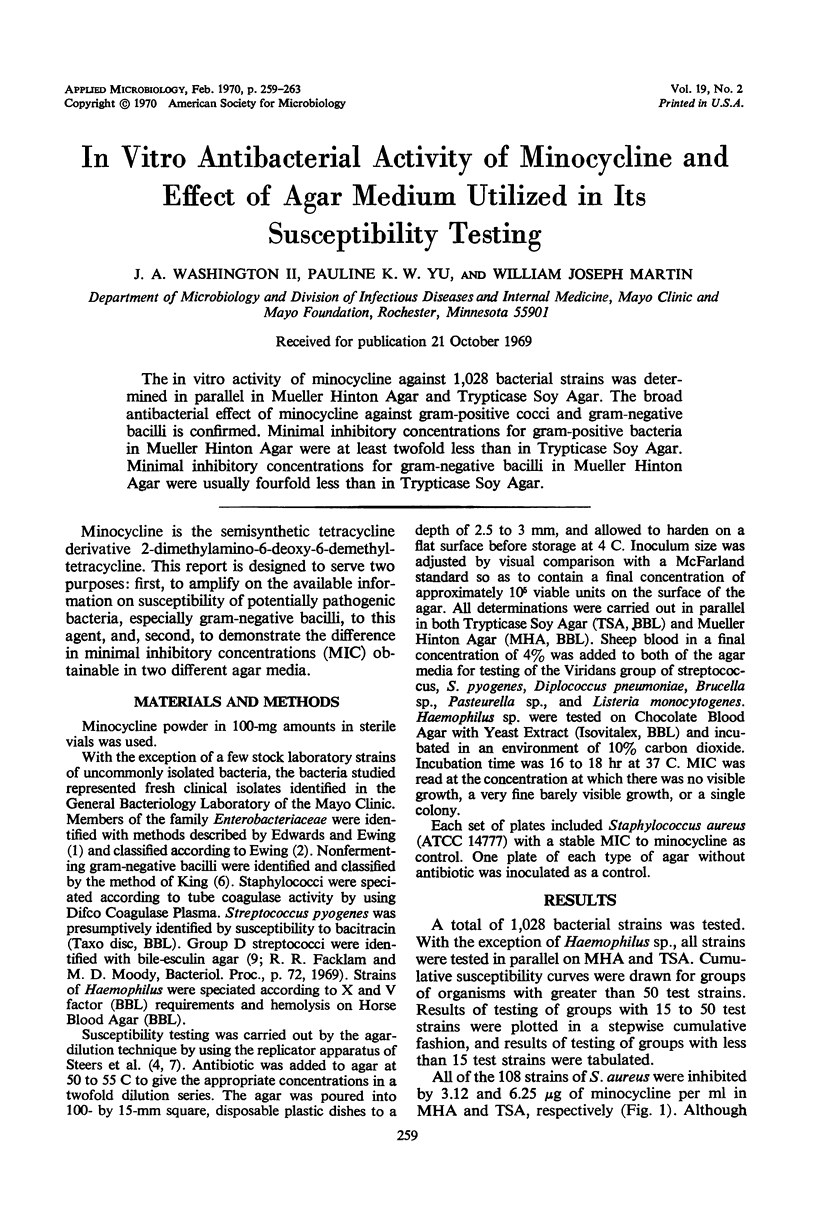
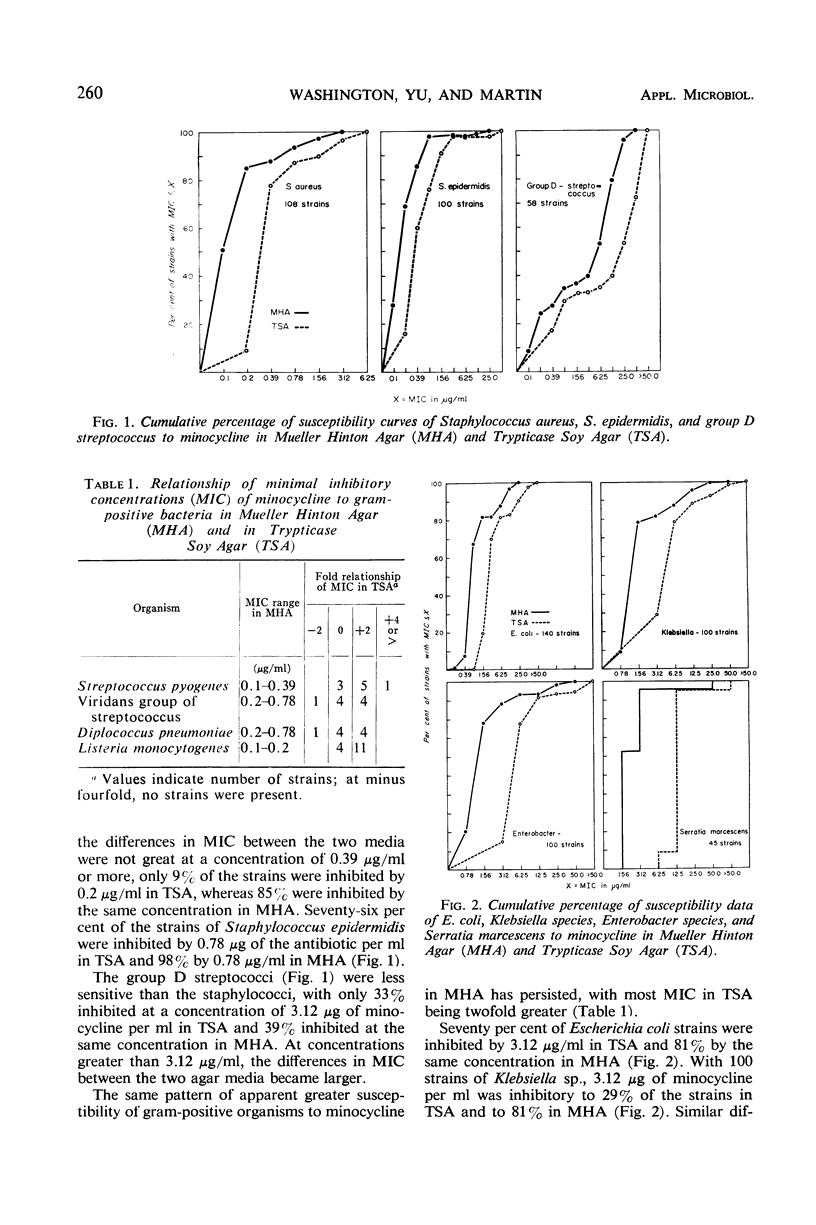
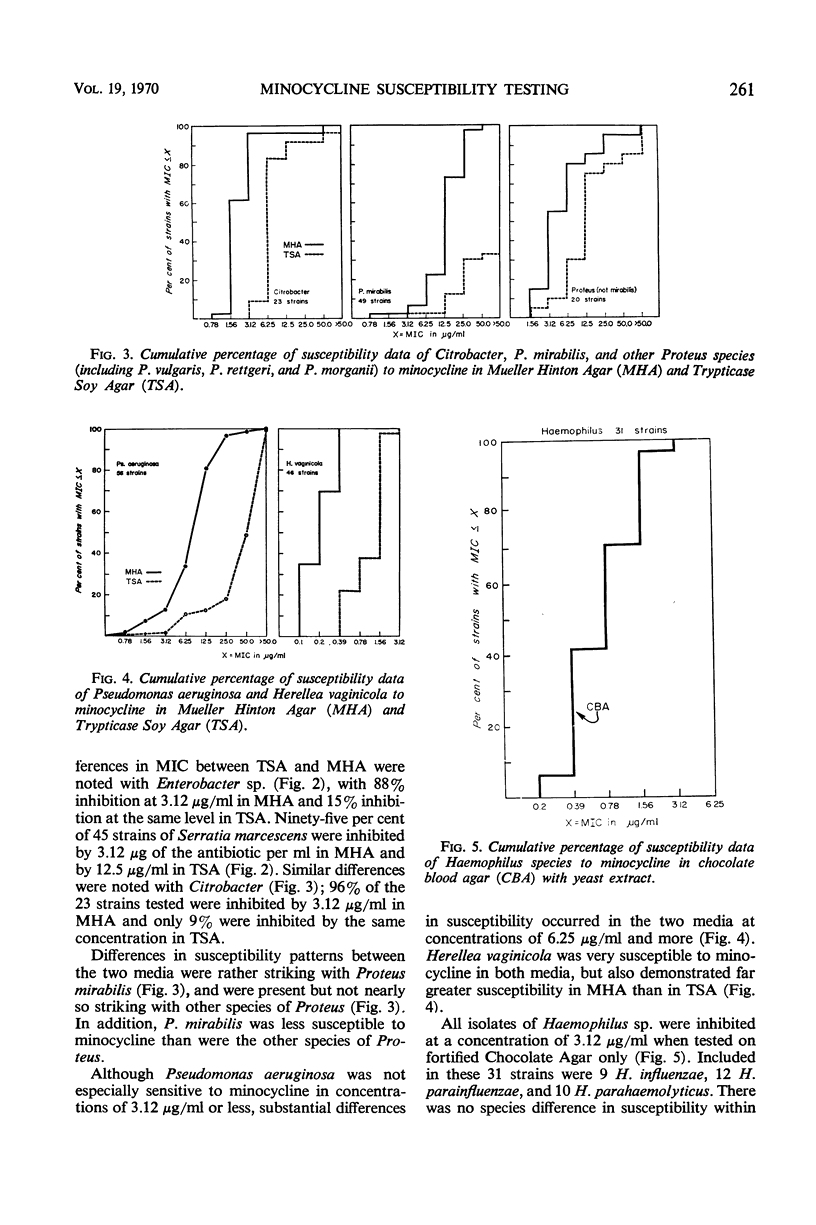
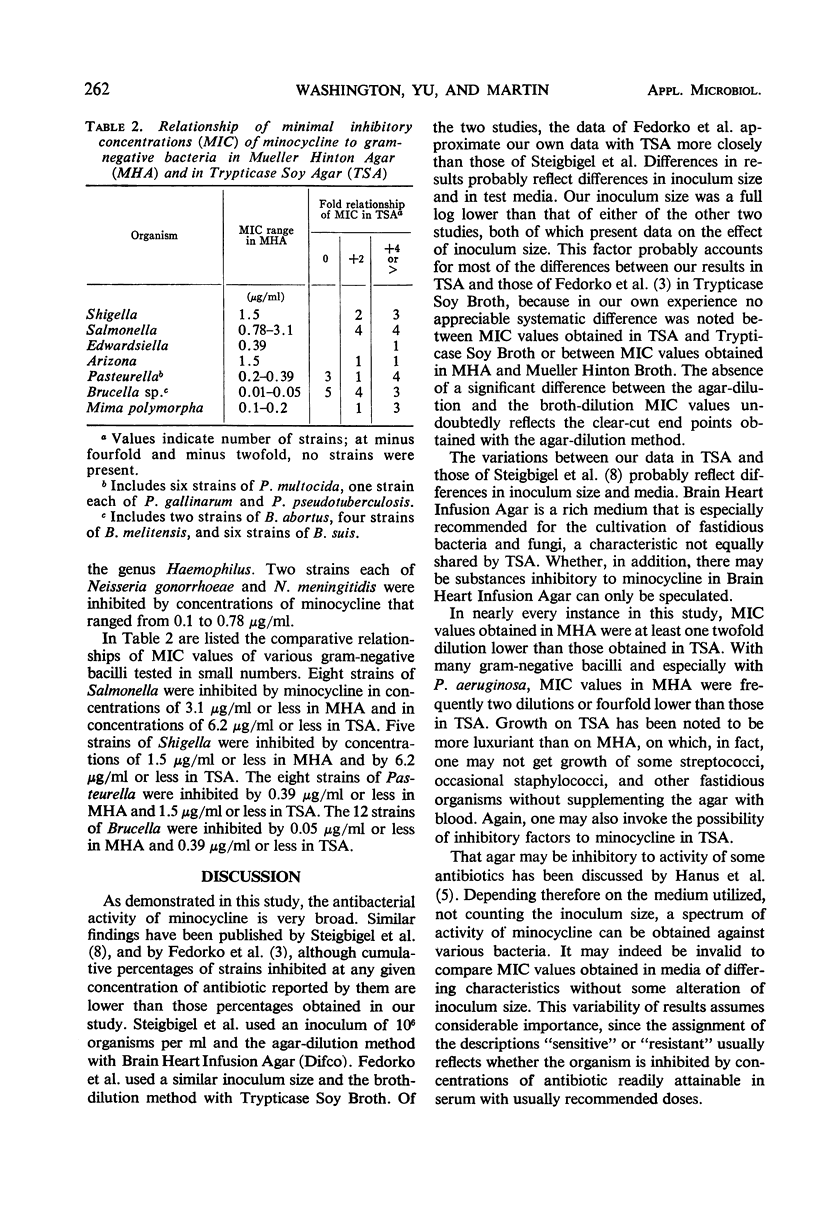
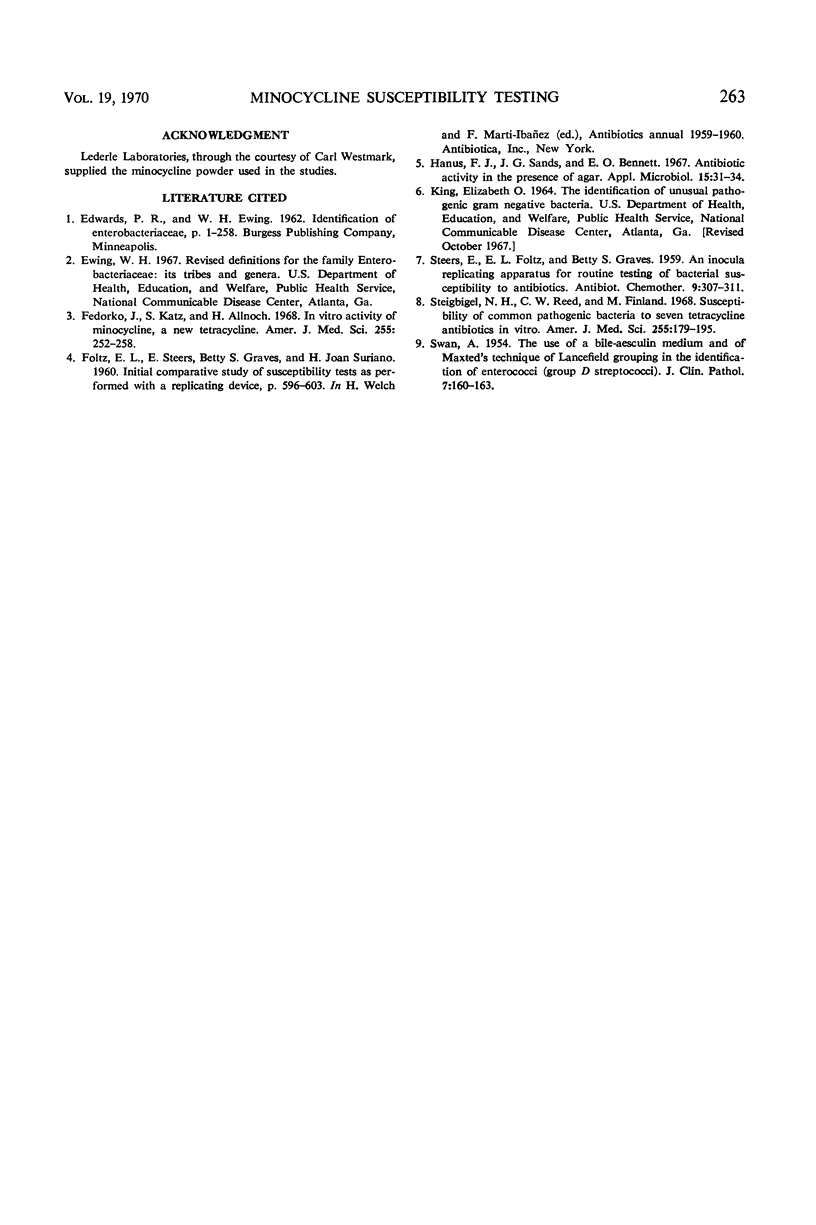
Selected References
These references are in PubMed. This may not be the complete list of references from this article.
- Fedorko J., Katz S., Allnoch H. In vitro activity of minocycline, a new tetracycline. Am J Med Sci. 1968 Apr;255:252–258. doi: 10.1097/00000441-196804000-00006. [DOI] [PubMed] [Google Scholar]
- Hanus F. J., Sands J. G., Bennett E. O. Antibiotic activity in the presence of agar. Appl Microbiol. 1967 Jan;15(1):31–34. doi: 10.1128/am.15.1.31-34.1967. [DOI] [PMC free article] [PubMed] [Google Scholar]
- SWAN A. The use of a bile-aesculin medium and of Maxted's technique of Lancefield grouping in the identification of enterococci (group D streptococci). J Clin Pathol. 1954 May;7(2):160–163. doi: 10.1136/jcp.7.2.160. [DOI] [PMC free article] [PubMed] [Google Scholar]
- Steigbigel N. H., Reed C. W., Finland M. Susceptibility of common pathogenic bacteria to seven tetracycline antibiotics in vitro. Am J Med Sci. 1968 Mar;255:179–195. doi: 10.1097/00000441-196803000-00005. [DOI] [PubMed] [Google Scholar]


